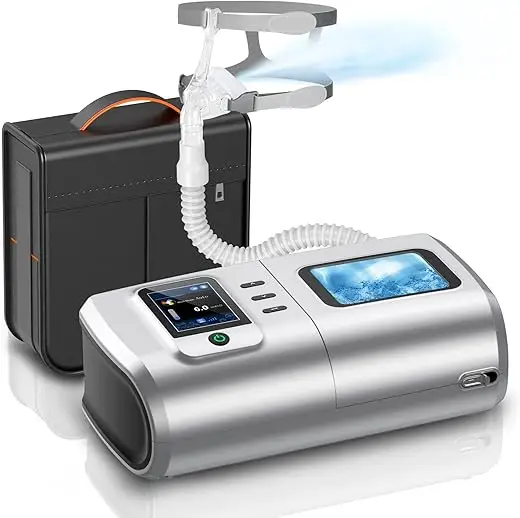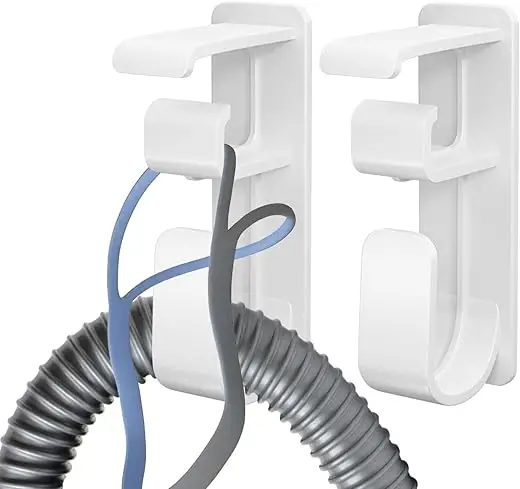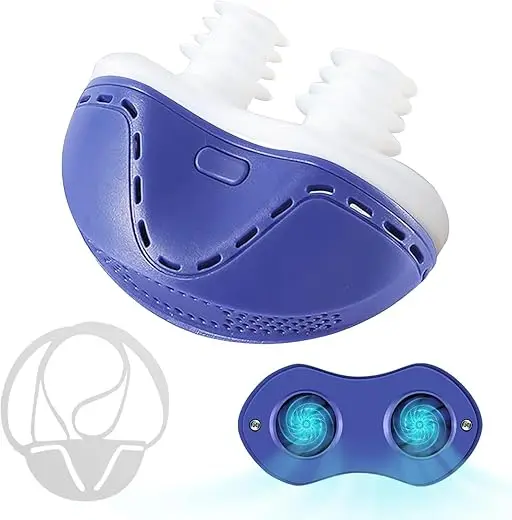Unlock Your Best Sleep Yet!
Discover how CPAP therapy can transform your sleep and health. This guide walks you through the essential steps to harness its full potential for a revitalized life. Unlock the power of restful nights and energized days by understanding sleep apnea and embracing CPAP’s life-changing benefits.
What You Need to Get Started
Step 1: Understanding Sleep Apnea
Why You Can't Afford to Ignore This ConditionLearn about sleep apnea, a condition where your breathing repeatedly stops and starts during sleep. Familiarize yourself with its causes, including obesity, structural issues in the throat, and even lifestyle factors like alcohol consumption.
Recognize the symptoms. Common signs include loud snoring, gasping for air during sleep, and excessive daytime fatigue. Imagine waking up exhausted, despite a full night’s sleep—that’s the impact of untreated sleep apnea.
Acknowledge the serious health risks associated with sleep apnea. It can lead to high blood pressure, heart disease, diabetes, and stroke. For instance, a person might initially dismiss their snoring as harmless, not realizing it’s a red flag for these severe health issues.
Take time to educate yourself and recognize these dangers. Understanding sleep apnea is essential in appreciating the necessity of CPAP therapy. Your pathway to better health starts with knowledge—so ask questions, seek information, and become proactive about your sleep health.
Step 2: Getting a Proper Diagnosis
The Key to Your Personalized Sleep PlanSchedule a Sleep Study. Consult a healthcare professional to discuss your symptoms and concerns. They may recommend a sleep study, either at a sleep clinic or at home, to monitor your sleep patterns and breathing.
Document Your Sleep Habits. Keep a sleep diary for at least two weeks. Note when you sleep, when you wake, any nighttime disturbances, and how you feel during the day. This information helps your doctor assess your situation more accurately.
Discuss Your History. Be honest about your medical history and lifestyle. For example, mention any family history of sleep apnea, weight fluctuations, or habits like smoking and alcohol use. Sharing this information is crucial for pinpointing the underlying causes of your sleep issues.
Follow Up. After the sleep study, schedule a follow-up appointment to review the results. The diagnosis will confirm whether you have sleep apnea and its severity. Your doctor will then discuss appropriate treatment options tailored to your needs.
By understanding your diagnosis and its implications, you lay the groundwork for effective CPAP therapy, which is vital for your journey to better sleep and health.
Step 3: Choosing the Right CPAP Equipment
Not All Machines Are Created Equal!Explore CPAP Machine Types. Start by familiarizing yourself with the different types of CPAP machines: standard CPAP, auto-adjusting (APAP), and bi-level (BiPAP). A standard CPAP delivers a constant air pressure, while an APAP adjusts pressure automatically based on your breathing patterns, ensuring maximum comfort. BiPAP machines offer two pressure levels—one for inhalation and a lower one for exhalation—ideal for users who struggle with higher pressures.
Select a Comfortable Mask. Next, invest time in selecting the right mask. Options include full-face masks, nasal masks, and nasal pillow masks. For example, a full-face mask is beneficial for mouth sleepers, while nasal pillows are less obtrusive for those who prefer a lighter touch. Try on different styles to find the best fit—comfort is crucial for adherence to therapy.
Consult Your Provider. Reach out to your healthcare provider or a CPAP supplier. They can offer guidance and even allow you to test various machines and masks. Picture how much easier your transition could be when equipped with the perfect setup, customized just for you.
Consider Additional Features. Finally, look for features like heated humidifiers and built-in filters. A heated humidifier can ease dryness in your throat, enhancing comfort for a better night’s sleep.
Choosing the right CPAP equipment is a key step towards improving your sleep experience. So, use these insights to find your perfect match and set the stage for effective therapy.
Step 4: Mastering CPAP Usage
Your New Nightly Routine: Embrace It!Set Up Your CPAP Machine Correctly. Begin by placing your CPAP machine on a stable, flat surface close to your bed. Ensure the air intake is unobstructed—avoid placing it in a corner or under your bed. Connect the tubing securely to both the machine and your mask.
Create a Routine. Establish a nightly ritual to promote consistency. Charge any battery-operated units during the day and prepare your machine before bedtime. For instance, wash your face and put on your mask every night at the same time. This habit will signal your body that it’s time for sleep.
Clean Your Equipment Regularly. To maintain hygiene and functionality, clean your mask, tubing, and water chamber daily. Use mild soap and water, and consider investing in an ultraviolet sanitizer for a deeper cleanse. This simple step can prevent infections and enhance comfort, making it easier to stick with therapy.
Experiment with Mask Adjustments. If your mask feels uncomfortable, make minor adjustments. Tightening or loosening the straps can significantly change the fit. If air leaks occur, reposition the mask to ensure a proper seal. For example, aligning the mask with your nostrils and mouth comfortably can eliminate discomfort.
Stay Consistent. Aim to use your CPAP machine every night, even when you feel well-rested. Over time, your body will adapt, making it easier to incorporate into your sleep routine. Remember, consistency is the key to unlocking the full benefits of CPAP therapy!
Step 5: Tracking Your Progress and Adjustments
Don’t Just Set It and Forget It!Monitor Your Sleep Patterns. Keep a journal of your nightly sleep experiences. Note how many hours you’ve used the CPAP, how you feel upon waking, and any disruptions during the night. For example, record nights when you wake up feeling refreshed compared to those when you still feel fatigued.
Utilize CPAP Data. Many modern CPAP machines track your usage, mask fit, and leak rates. Review this data regularly to identify patterns. If your machine indicates lower usage, reflect on what might be affecting your adherence. For example, if you notice frequent leaks, it may be time to adjust your mask or straps.
Consult Your Healthcare Provider. Schedule regular check-ins with your doctor or sleep specialist, especially if you experience persistent problems. Bring your sleep journal and CPAP data to these appointments. This will provide insights into the effectiveness of your therapy and help with necessary adjustments.
Adjust Your Setup. Based on your observations and professional feedback, experiment with different masks or machine settings. If discomfort persists, consider a different mask type, or try adjusting the air pressure in consultation with your provider. Small adjustments can lead to significant improvements in your CPAP experience.
By actively tracking your progress, you’ll ensure your CPAP therapy remains effective and aligned with your evolving needs.
Embrace the Change for a Better Tomorrow!
By following these steps, you can unlock the life-changing benefits of CPAP therapy and enjoy improved health and well-being. It’s time to take control of your sleep! Are you ready to invest in a healthier future and reclaim the joy of restful nights?










So, embracing change is key? I’m still struggling with it. 😕 But I know I have to stick with it!
Absolutely, Nina! Change can be hard, but small steps make it easier. You’re not alone in this!
It’s tough at first! Just focus on one night at a time. You’ll get there!
Why is there so much gear for CPAP? It’s like a whole other hobby! 😂
Haha, right? It can feel overwhelming at first. But once you find what works for you, it gets easier!
Seriously! I think I have more CPAP accessories than actual hobbies now. 😂
Just started my CPAP journey and I gotta say, it’s a bit of a learning curve. Anyone else felt like they were fumbling around?
I felt like I was in a circus at first! 😂 But it gets better, I promise!
Totally normal, David! It takes time to get used to the equipment. Keep at it!
Just got diagnosed with sleep apnea last week. This guide was a lifesaver! I’m still overwhelmed with all the equipment options though. 😩
Happy to help, Emily! It’s normal to feel overwhelmed. Take your time and research each option!
Congrats on taking the first step, Emily! It can be super confusing, but don’t rush. Talk to your doctor about what’s best for you!
I felt the same way! I recommend checking out reviews and asking your healthcare provider for recommendations.
LOL, I thought I was just a heavy sleeper. Turns out I was just not breathing! Thanks for the info, guys! 😆
Haha, glad you found the info useful, Kevin! Sleep apnea can really sneak up on you.
Same here! Once I got my CPAP, I felt like a new person. Best decision ever!
Thanks for this guide! I’ve been hesitant about CPAP, but now I feel more informed. Just gotta get that diagnosis first!
You got this! Just remember, it’s all about improving your sleep and overall health.
Glad to hear you found it informative, Alice! Getting diagnosed is a big step. Wishing you all the best!
This guide is super helpful! I never realized how important it was to understand sleep apnea before diving into CPAP therapy. I thought it was just a snoring issue! 😅 Can anyone recommend a good CPAP machine?
I use the ResMed AirSense 10 and love it! It’s quiet and comfortable. Definitely recommend it! 😊
Glad you found it helpful, Sarah! The ResMed units are popular for a reason. Do check with your doctor for the best fit for your needs!
Tracking progress seems tedious, but I guess it’s important? Anyone actually do that?
Tracking really helps identify patterns and improvements, John. Plus, it can motivate you to stick with it!
I do! It’s super helpful to see how much my sleep has improved over time.
I love how this guide breaks down each step! The diagnosis part was scary, but knowing what to expect makes it easier. 🙌
Thanks for the feedback, Oliver! Knowing what to expect can definitely reduce anxiety around the process.
Agreed! The more we know, the less scary it feels. Knowledge is power!
Mastering CPAP usage is definitely the hardest part for me. I keep waking up with the mask off! 😩 Any tips?
I had that issue too! I found that a nasal pillow was way more comfortable than a full face mask.
That’s a common issue, Rachel! Try adjusting the straps or using a different mask type to find what works for you.
I’m still not sure about this CPAP thing. Seems like a hassle. Can’t I just deal with the snoring? 🤔
I was hesitant too, but trust me, the sleep you get with CPAP is life-changing! Give it a shot! You’ll be amazed!
Totally understandable, Mark! It’s a big adjustment, but many people find it worth it. Have you thought about getting a sleep study?